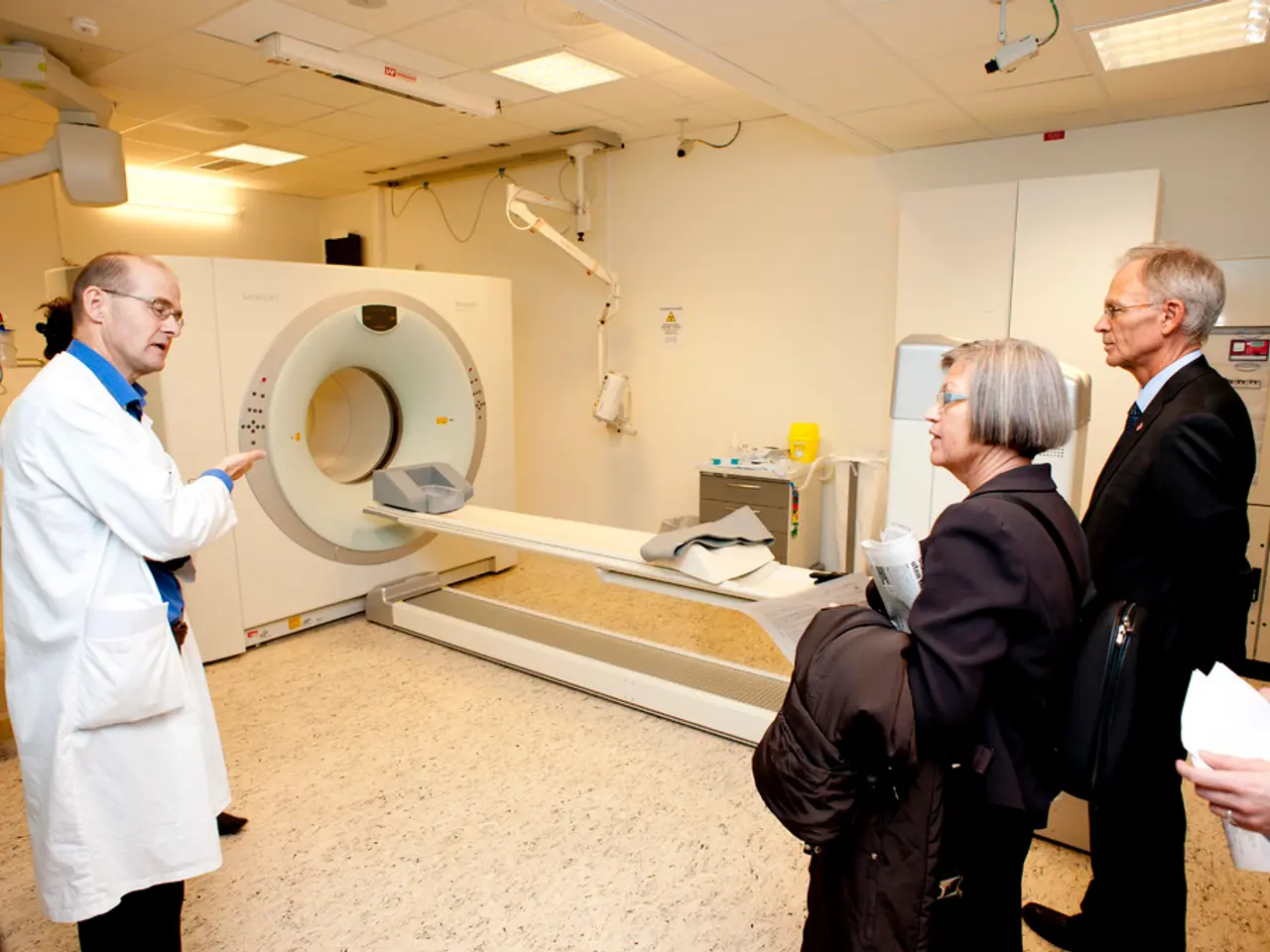Frequent Back Ailments: Identifying Them, Understanding Their Signs, and Exploring Remedies
Back pain is a common affliction that affects millions of people worldwide. This article aims to provide an overview of the causes, types, symptoms, and treatment options for back pain.
Back pain can stem from various sources, such as muscle or ligament strain, intervertebral disc degeneration or herniation, inflammatory joint diseases, osteoporosis-related fractures, and medical conditions like endometriosis or fibromyalgia. Acute low back pain often follows improper movements like lifting, twisting, or bending[1][3].
The main types of back pain include musculoskeletal/mechanical pain, inflammatory pain, malignant pain, and infectious pain[3]. Musculoskeletal pain can manifest as muscle strains, spasms, osteoarthritis, herniated discs, spinal stenosis, compression fractures, while inflammatory pain is associated with arthritis related to immune conditions, spondylitis, and inflammation of reproductive or gastrointestinal systems. Malignant pain is due to bone metastases from cancers like lung, breast, or prostate, and infectious pain stems from spinal infections such as osteomyelitis or abscesses[3].
Common symptoms of back pain vary but typically include localized or radiating pain, muscle stiffness or spasms, reduced range of motion, and numbness or tingling if nerve compression occurs (radiculopathy)[1][3][5].
Treatment options depend on the cause and severity. Conservative care may involve rest, physical therapy, exercises to strengthen back muscles, hot/cold packs, and medications like pain relievers, muscle relaxants, or corticosteroid injections[1][2][4]. Lifestyle modifications, such as weight management and ergonomic adjustments, can also be beneficial. In severe or persistent cases, surgical intervention may be considered[1][2][4].
Prevention strategies focus on maintaining good posture and ergonomics, regular physical activity to strengthen the back and core muscles, keeping a healthy weight, avoiding prolonged sitting or awkward sleeping positions, and a balanced diet rich in anti-inflammatory foods[2].
Upper and middle back pain can result from poor posture or injuries. Numbness, tingling, or weakness in the legs could signal nerve compression or damage, such as that seen with herniated discs or spinal stenosis[1][3]. Core-strengthening activities can help stabilize the spine and reduce the risk of future injuries. Stress and psychological factors can exacerbate muscular tension and result in back pain[1].
Persistent back pain that doesn't improve with rest or over-the-counter treatments may indicate a more significant issue. Back pain can be classified into acute (short-term) and chronic (lasting for three months or more) types. Lower back pain is the most common type, often linked to mechanical issues or degenerative conditions[1]. Sciatica, a specific type of back pain, causes radiating pain down the legs due to nerve compression[1].
Early recognition of back pain symptoms can aid in seeking appropriate treatment. Prescription medications such as muscle relaxants or anti-inflammatory drugs may be necessary for some cases of back pain[1]. Orthopedic surgeons and resources can provide information about back pain and related conditions like herniated discs, arthritis, and scoliosis[4].
In summary, back pain arises from various mechanical, inflammatory, malignant, or infectious causes, with symptoms depending on the source. Most cases can be managed with a combination of therapies and lifestyle changes, while prevention emphasizes proper body mechanics and fitness[1][2][3][4][5].
- Some medical conditions like endometriosis or fibromyalgia can cause back pain.
- Fitness and exercise, such as activities to strengthen back muscles, can help prevent and manage back pain.
- Nutrition plays a role in maintaining a healthy back, with a balanced diet rich in anti-inflammatory foods being beneficial.




